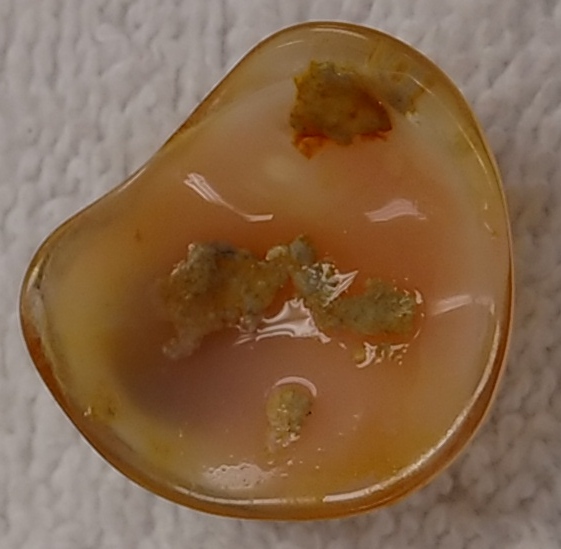Many people find that they are able to comfortably wear their prosthetic eye full time, while others are more comfortable removing it before bed. We do advise the removal of scleral shells at bedtime.
Prosthetic Eye Care
Important Things to Know
- Always wash your hands thoroughly before handling the prosthesis.
- Remove your artificial eye only as often as you feel necessary.
- Close sink drains and toilet seats before handling. Work over a towel.
- Clean your prosthesis with mild soap and water. We recommend Baby Shampoo. Do not use anything abrasive. Never clean in rubbing alcohol. It will irreversibly damage your artificial eye.
- Always wipe toward your nose when cleaning or rubbing your eyelids.
- Use a soft, moist washcloth or cotton swab to wash around your eyelids.
- If your eye is dry, consult your ocularist or ophthalmologist for lubrication suggestions.
- You may swim with the prosthesis in but if you dive, water ski, or open your eyes under water, wear goggles to prevent losing it underwater. Chlorine will not hurt.
- If you remove your prosthesis for more than a few minutes, store it in a container of water.
- See your ophthalmologist if any infection or other eye problems arise.
- Have your prosthesis checked and polished by your ocularist at least once a year. Children every three to six months.
- Glasses (with polycarbonate lenses) should be worn for protection of the good eye. Consult with your ocularist about cosmetic optics.
Basic Artificial Eye care
Your new custom made artificial eye (ocular prosthesis) is hand crafted from acrylic starting with an impression taken of your socket. It is carefully fit to maximize comfort, have a natural appearance and assure the health of your socket. However, it does require some periodic attention from you for the best result.
Remove the prosthesis only as often as you feel necessary. Because a prosthesis is foreign to your eye socket, nature provides a buffer of tears which lay a film over the entire surface. Eventually these tears will accumulate and irritate your eyelids. If left untreated, you may produce a mucous build-up on your prosthesis. When it progresses to the point of discomfort, you should call your ocularist to have the prosthesis cleaned and polished and have your socket checked.
Prosthesis prior to professional cleaning, viewed with iodine solution.
Colds, allergies, dusty areas, cigarette smoke, being overtired, wind, extreme temperature changes, seasonal changes and a rough prosthesis can cause excessive mattering and occasionally infection.
You may remove and wash your prosthesis at any time. Use a mild soap, rubbing the prosthesis between your fingers. Rinse well with water and insert. If necessary you may flush out your socket with warm water.
Beyond these basics, please discuss your individual needs and concerns with your ocularist.
LUBRICATION
Lubricants are used to reduce irritation and discomfort which can be experienced when the prosthesis is worn for long periods. There are many types of ocular lubricants available in the market; we can recommend the best one for your needs.
Insertion
Dot goes up. Top goes in first. Slide prosthesis under upper eyelid as far as it will go. Then, gently pull lower lid down and tuck eye in behind lower lid.
Removal
Bottom comes out first. Attach suction cup to front surface of prosthesis. Tip the handle up while gently pulling the lower lid down with the other hand. Once you expose the lower edge of the prosthesis, it should slide right out.
How often should an artificial eye be polished?
Over time, small scratches accumulate on the surface of your prosthesis simply from wiping and handling it. This is normal, but will cause discomfort if left untreated. It is important to have the prosthesis checked, cleaned and polished at least once a year by your ocularist. This will minimize irritation to the socket and eyelids and help reduce mattering. Children should be checked every three to six months.
You will notice a significant improvement in comfort after polishing- This is also an excellent opportunity for your ocularist to check your socket to be sure it is healthy and refer you to your ophthalmologist if necessary.
IMPLANT INFORMATION
Most ophthalmologists surgically place an implant deep into your socket at the time your eye is removed. It is usually a sphere and can be made from a variety of materials (acrylic, glass, metal, hydroxyapatite, Medpor, etc.). The implant is used to restore volume to your orbit after the eye is removed and allows for the attachment of the eye muscles. It is not visible and should remain in your socket for life.
After healing, an artificial eye is then custom fit to your socket. This may be done six to eight weeks after your surgery. If you are not sure whether you have an implant or what material it is made of, ask your ophthalmologist. This is especially important should you ever need an MRI.




